| Origin | Distal anterior surface of ulna |
| Insertion | Distal anterior surface of radius |
| Action | Pronates forearm at radioulnar joint |
| Nerve | Anterior interosseous nerve (C7, C8) |
| Artery | Anterior interosseous artery |
Location & Overview
In Latin, the word ‘pronator’ means ‘lying face downward’. This Latin word suggests how the pronator quadratus muscle gets its name. The pronator quadratus muscle is able to rotate the forearm (into a pronated position) with the palm facing down. It is also a quadrilateral shape. The pronator quadratus is short and flat and has parallel running fibers. It is the deepest muscle of the anterior forearm and unable to be palpated or observed superficially [1] [2].
The pronator quadratus muscle is useful for activities that involve pronation of the forearm, such as turning a doorknob, using a screwdriver or wrench, or using a computer mouse. It is also involved in activities that require fine motor skills, such as painting, drawing or writing. The pronator quadratus also assists with sports that involve forearm rotation, such as baseball, where it is necessary to twist the wrist in order to throw a ball or hit the ball with a bat.
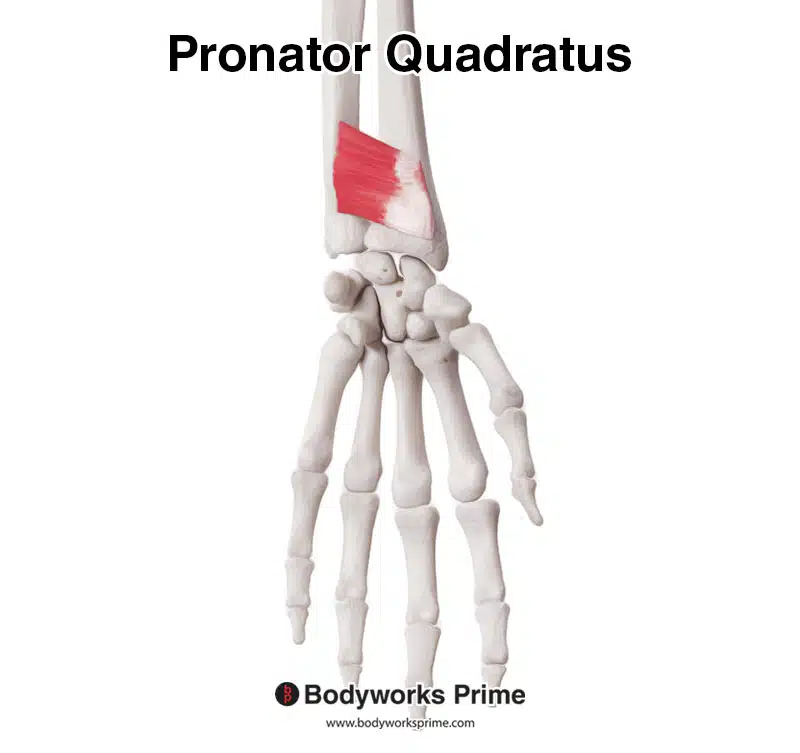
Here we can see a close up of the pronator quadratus muscle on the left wrist from an anterior view.
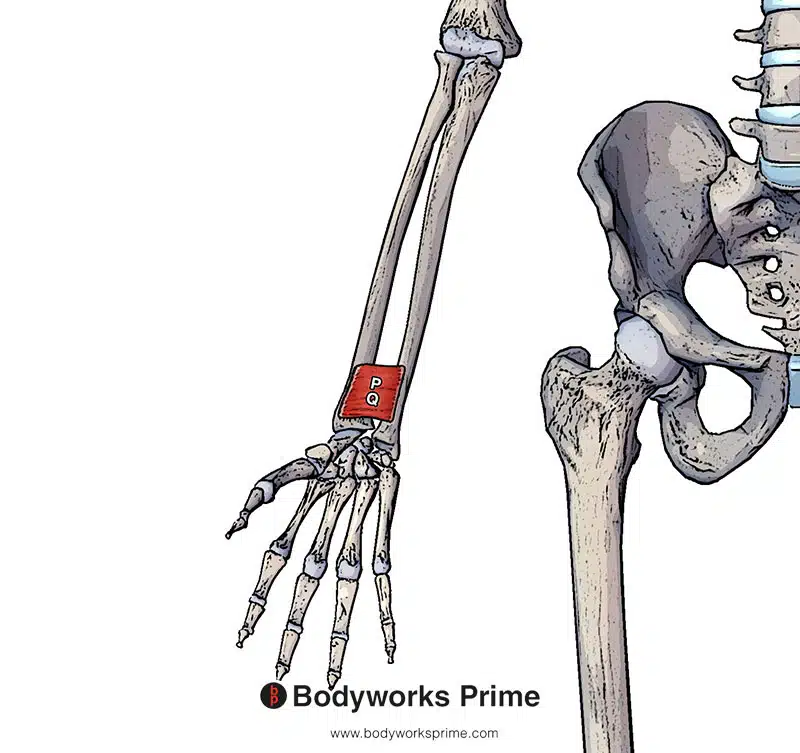
Here we can see the pronator quadratus from an anterior view on the right wrist.
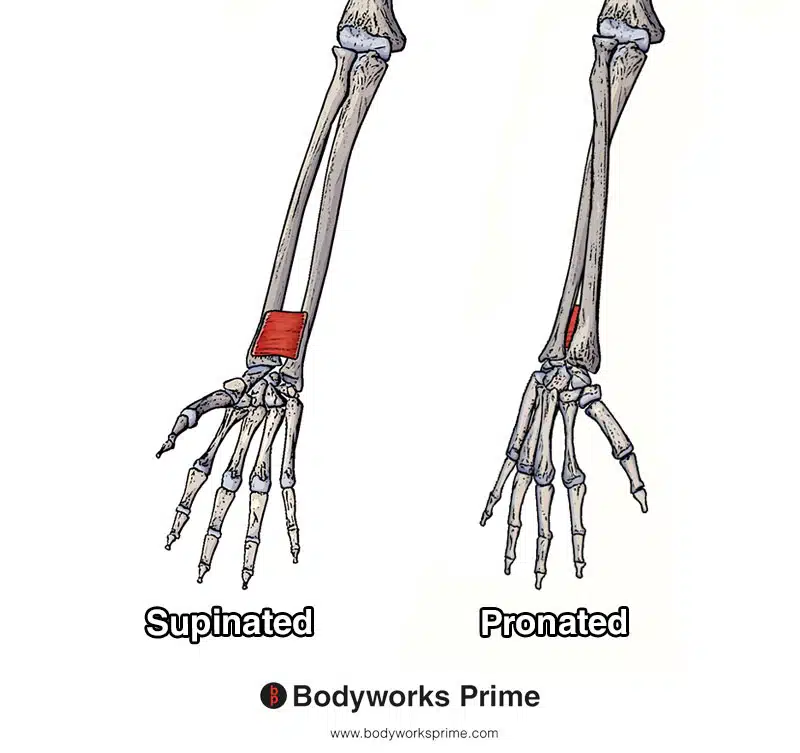
Here we can see an anterior view of the pronator quadratus in both a supinated and a pronated position.
Origin & Insertion
The pronator quadratus originates from the anterior surface of the distal fourth of the ulna. It then inserts onto the lateral border and anterior surface of the distal one fourth of the radius[3] [4]. This origin and insertion is displayed in the image below.
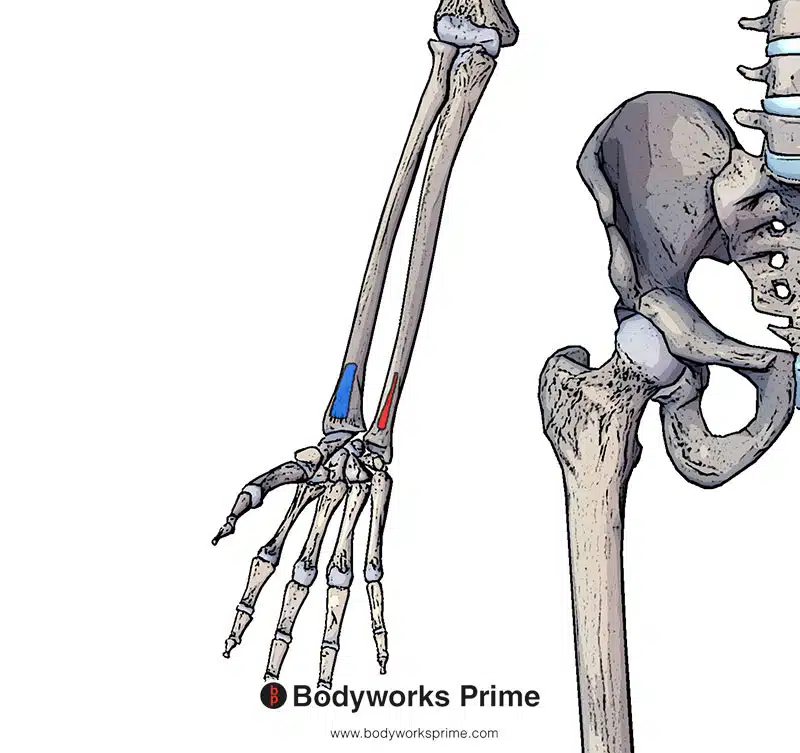
Here we can see the origin and insertion of the pronator quadratus. The origin is on the distal anterior surface of the ulna and the insertion is on the distal anterior surface of radius.
Actions
As the pronator quadratus muscle’s name suggests, its action is pronation of the forearm at the proximal radioulnar joint. Pronation essentially involves turning the hand over, so that the back of the hand (dorsal side) is facing the front (anterior) of the body [5] [6].
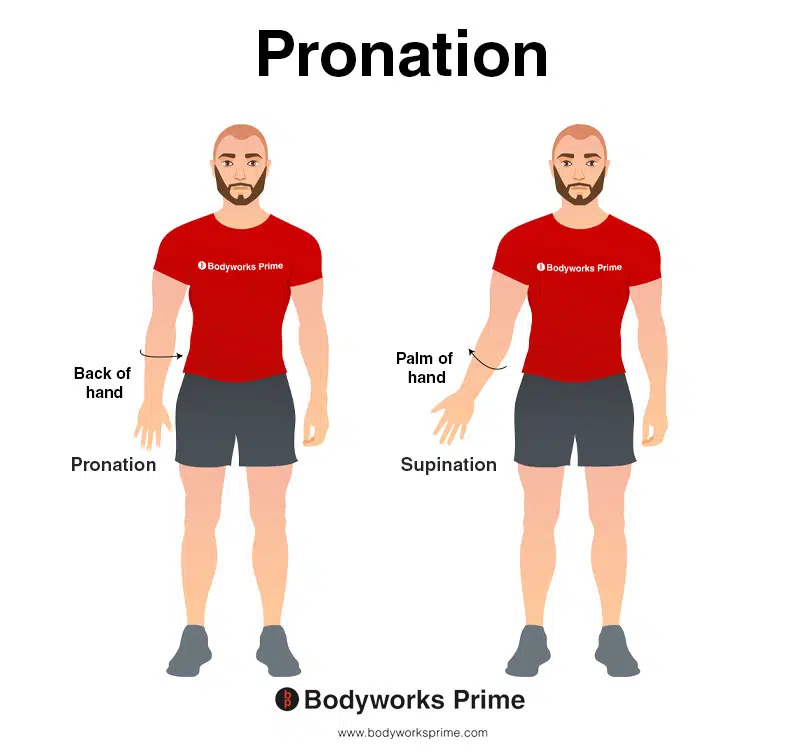
This image demonstrates pronation, where the hand is rotated so that the back of the hand faces the front of the body. The opposite of pronation is supination.
Innervation
The pronator quadratus muscle is innervated by the anterior interosseous nerve (C7, C8). The anterior interosseous nerve supplies the deep muscles on the anterior of the forearm and it is a branch of the median nerve [7] [8] [9].
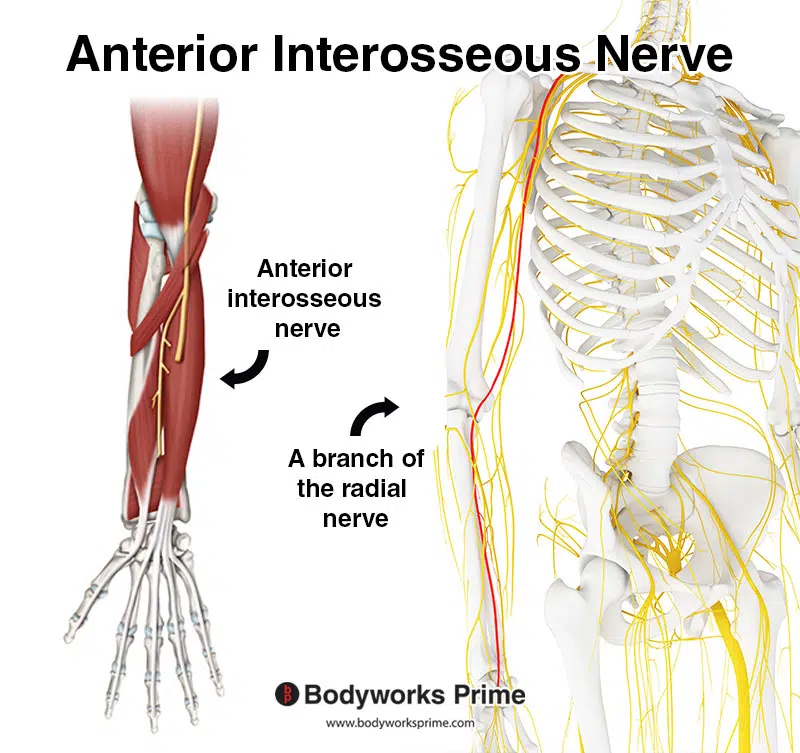
Pictrured here we can see the anterior interosseous nerve which is a branch of the radial nerve. The radial nerve is highlighted in red on the right hand side.
Blood Supply
Blood is supplied to the pronator quadratus via the anterior interosseous artery which is a branch of the common interosseous artery. The common interosseous artery arises from the ulnar artery in the cubital region of the forearm [10] [11].
Want some flashcards to help you remember this information? Then click the link below:
Pronator Quadratus Flashcards
Support Bodyworks Prime
Running a website and YouTube channel can be expensive. Your donation helps support the creation of more content for my website and YouTube channel. All donation proceeds go towards covering expenses only. Every contribution, big or small, makes a difference!
References
| ↑1, ↑3, ↑5 | Choung PW, Kim MY, Im HS, Kim KH, Rhyu IJ, Park BK, Kim DH. Anatomic Characteristics of Pronator Quadratus Muscle: A Cadaver Study. Ann Rehabil Med. 2016 Jun;40(3):496-501. doi: 10.5535/arm.2016.40.3.496. Epub 2016 Jun 29. PMID: 27446787; PMCID: PMC4951369. |
|---|---|
| ↑2, ↑4, ↑6, ↑8, ↑11 | Moore KL, Agur AMR, Dalley AF. Clinically Oriented Anatomy. 8th ed. Philadelphia: Lippincot Williams & Wilkins; 2017. |
| ↑7, ↑10 | Thomas BP, Kiran SP, Tang M, Geddes CR, Morris SF. The Vascular Basis of the Pronator Quadratus Muscle Flap and Its Use in Clinical Cases. Indian J Plast Surg. 2021 Jan;54(1):63-68. doi: 10.1055/s-0040-1716421. Epub 2020 Sep 7. PMID: 33814744; PMCID: PMC8012782. |
| ↑9 | Svízenská I, Cizmár I, Visna P. An anatomical study of the anterior interosseous nerve and its innervation of the pronator quadratus muscle. J Hand Surg Br. 2005 Dec;30(6):635-7. doi: 10.1016/j.jhsb.2005.06.017. Epub 2005 Aug 22. PMID: 16115708. |










